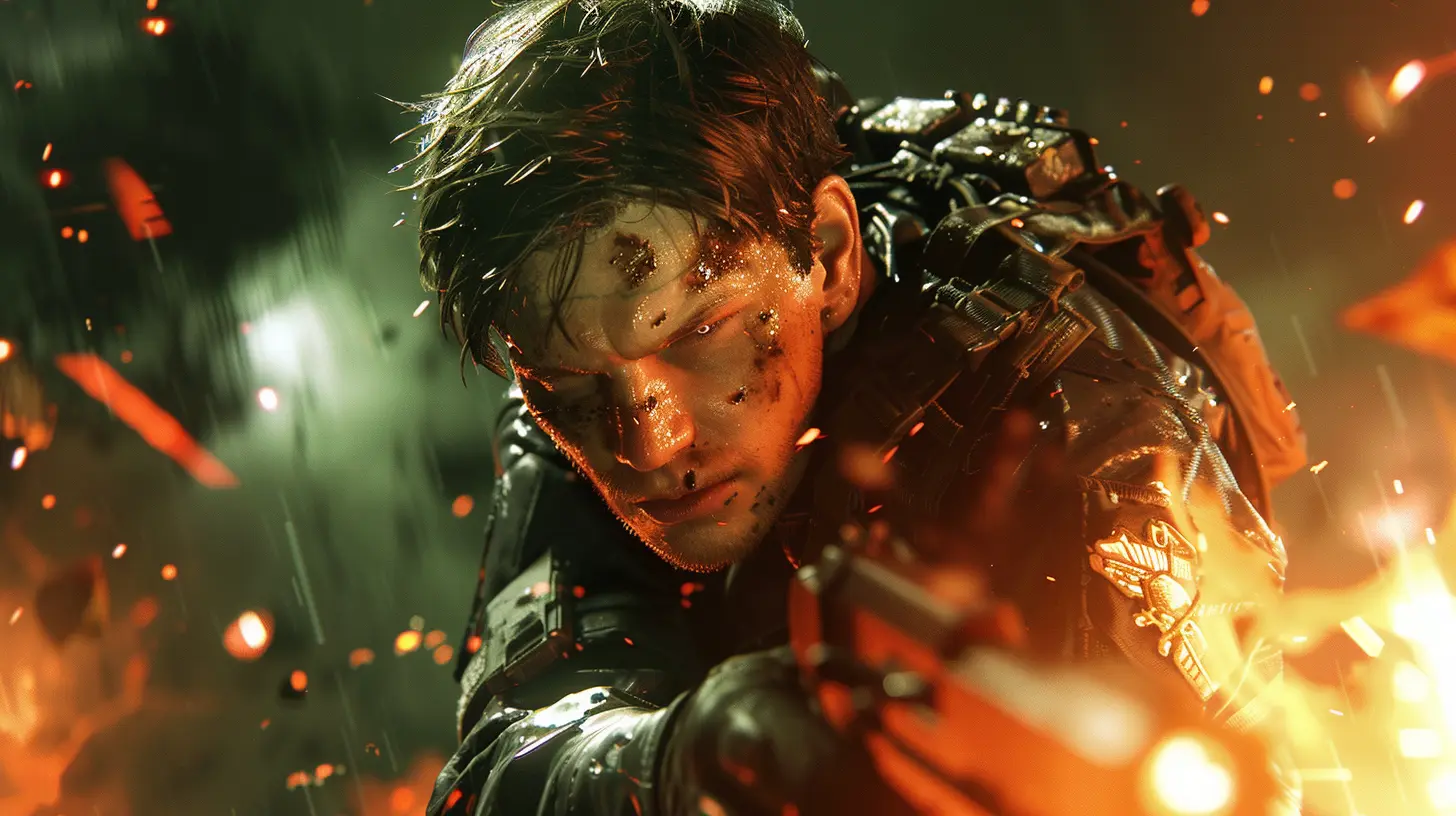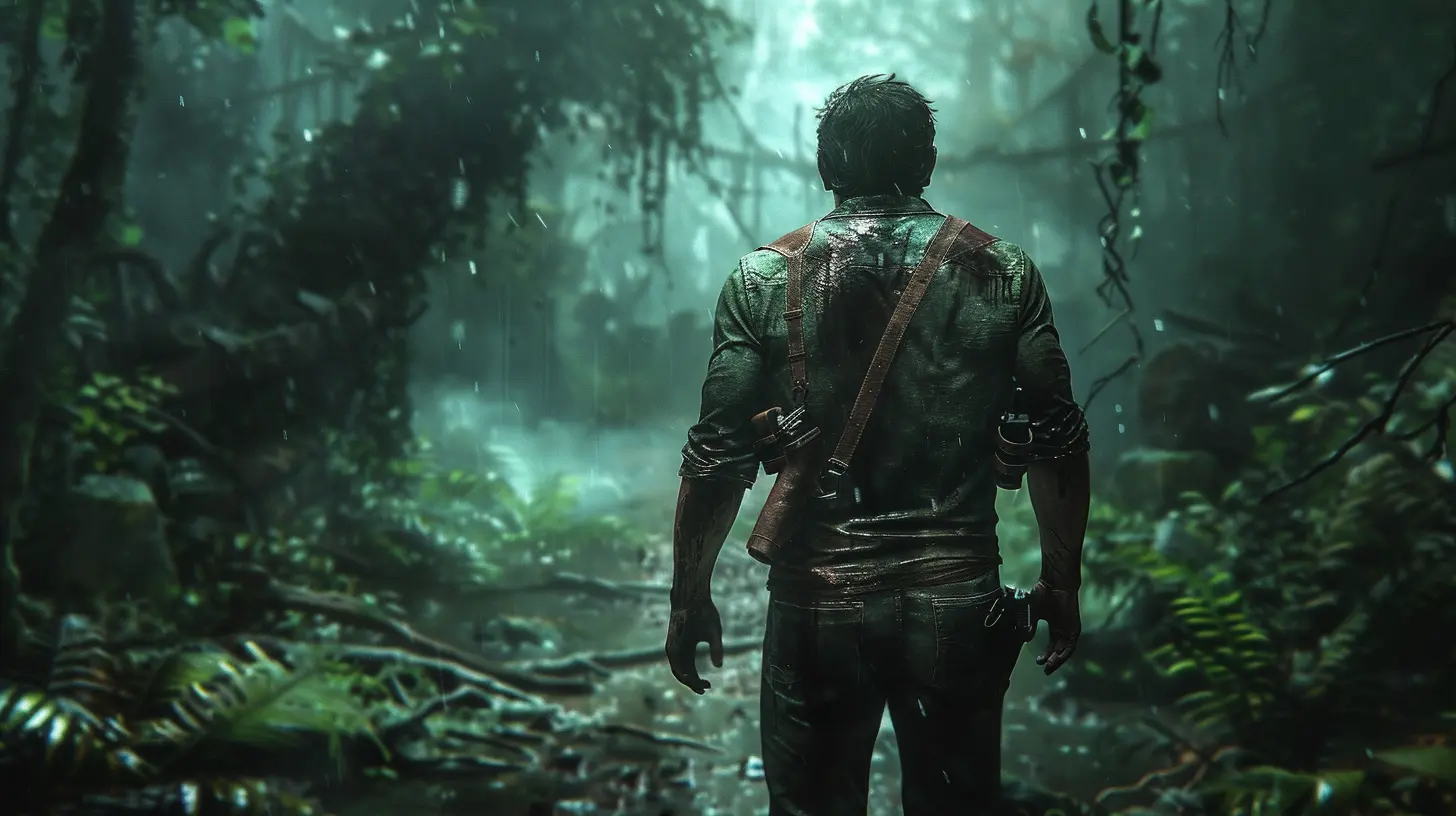How Game Physics Revolutionized the Action Genre
23 November 2025
When was the last time a game made you gasp, not because of the story or visuals, but because of how real everything felt? Whether it’s watching a crumbling building collapse piece by piece or sending an enemy flying with the perfect grenade toss, game physics have transformed the action genre in ways we never imagined. Let’s take a deep dive into how this unsung hero of game development changed the face of action games forever.
What Are Game Physics, Anyway?
Before we dive into the nuts and bolts, let’s talk about what game physics actually are. Simply put, game physics is the simulation of real-world phenomena in a virtual environment. It's what determines how objects fall, collide, bounce, or react to external forces, like explosions or gravity.Think of it this way: if graphics make games look good, physics makes them "feel" good. A grenade rolling downhill or the satisfying arc of a well-aimed bullet—they’re all thanks to game physics. And in the action genre, where chaos and intensity reign supreme, these details matter more than ever.
How It All Began: A Quick History
Game physics weren’t always the crowd-pleaser they are today. Back in the early days of gaming, physics were basic, to say the least. Most games relied on pre-set animations, meaning objects behaved the same way every single time. A barrel didn’t roll because of gravity; it moved because a programmer said it should.Then came the late 1990s and early 2000s, an era where everything began to change. Titles like Half-Life introduced rudimentary physics in gameplay, where objects could react to the player’s actions in a realistic (albeit limited) way. From there, games like Max Payne and Havok-engine-powered titles started laying the groundwork for action games as we know them today.
But let’s be honest: game-changing moments (pun intended) don’t happen overnight. It took years of innovation and out-of-the-box thinking to get where we are now.
Why Game Physics Matter in the Action Genre
Okay, so game physics sound cool and all—but why do they matter? Let me break this down for you. Action games thrive on immersion and adrenaline. You’re swinging swords, dodging bullets, and causing mayhem. Without believable physics, the illusion shatters.Imagine this: you fire a rocket at a wall, and nothing happens. No debris flies, no cracks appear, and the wall refuses to budge. Boring, right? Now imagine the same scenario, but with realistic physics. The wall crumbles, smoke fills the air, and the impact sends your enemies flying. That’s the power of physics—they make action games feel alive.
The Tech Marvels Behind the Scenes
So how do developers pull off this wizardry? Let’s talk tech. Modern action games rely on advanced physics engines—pieces of software designed to calculate all these interactions in real time. Some of the most popular ones include:1. Havok Physics
Havok is like the granddad of modern game physics. It’s been used in hundreds of games like Uncharted, Assassin’s Creed, and The Elder Scrolls V: Skyrim. If you’ve ever climbed a collapsing tower or watched enemies ragdoll hilariously after an explosion, you’ve probably seen Havok in action.2. Ragdoll Physics
Speaking of ragdolls, let’s give this feature its own spotlight. Ragdoll physics simulate how a body behaves when it’s limp—perfect for when characters die or get knocked out. It’s both realistic and a little darkly funny (admit it, you’ve laughed at bad guys flopping like puppets).3. Physics-Based Destruction
Games like Battlefield and Red Faction took destruction to a whole new level. They introduced fully destructible environments, where buildings, walls, and vehicles react to your every move. Want to level the playing field? Literally take out the building your enemies are hiding in.The Role of Game Physics in Iconic Action Games
Let’s take a trip down memory lane and look at how game physics turned some already-great action games into unforgettable experiences.1. Half-Life 2 (2004)
Valve wasn’t messing around when they introduced the Gravity Gun in Half-Life 2. This genius tool let players manipulate objects in the environment to solve puzzles, attack enemies, or just wreak havoc. It was one of the first times players felt like they were interacting with a world that followed the rules of physics.2. Red Faction: Guerrilla (2009)
If you’ve ever wanted to smash stuff guilt-free, Red Faction: Guerrilla is the game for you. The game’s Geo-Mod engine let players destroy virtually anything. Buildings didn’t just disappear—they crumbled realistically, piece by piece. Destruction became a key gameplay mechanic, not just an afterthought.3. Battlefield Series
No list about physics in action games is complete without Battlefield. Whether it’s blowing up walls to create a new path or leveling entire structures during a firefight, Battlefield’s Frostbite engine set the gold standard for large-scale destruction in multiplayer games.4. Just Cause Series
Sometimes game physics aren’t about realism—they’re about having fun. In the Just Cause series, you can grapple enemies to vehicles, attach explosives to cows, and create chaos in absurdly creative ways. The exaggerated physics don’t make sense, but that’s what makes them so incredible.How Game Physics Enhance Immersion
Remember how I said physics make games “feel alive”? That’s not just for show—it’s a key part of immersion. When a game’s world obeys rules of physics you’re familiar with, you naturally fall into its rhythm. It’s like slipping into a pair of comfy shoes.Realistic physics also create dynamic, unscripted moments that are unique to each playthrough. Maybe you accidentally blew up a bridge and took out both the bad guys and your escape route. Or perhaps you toppled a tower that caused a domino effect of destruction. These moments don’t just happen—they’re made possible by great physics.
What Does the Future Hold?
If you think game physics have peaked, think again. As technology advances, so does the potential for even more jaw-dropping interactions in gaming. With the rise of real-time ray tracing, AI-driven physics simulations, and improvements in hardware, the line between virtual and real-world physics will blur even further.Imagine a world where environments respond not just to what you do but how you do it. A grenade won’t just explode—it’ll affect the air pressure, scatter debris realistically, and even deform objects over time. The potential is limitless, and honestly, I can’t wait.
Conclusion: More Than Just a Gimmick
Game physics aren’t just some fancy feature to show off at E3—they’re the beating heart of what makes action games so thrilling. They’ve elevated the genre from simple button-mashing to something far more dynamic, unpredictable, and, dare I say, cinematic.So the next time you’re playing an action game and find yourself staring in awe at a perfectly collapsing building or laughing at a ragdolling enemy, take a moment to appreciate the science behind the chaos. After all, without game physics, the action genre wouldn’t be where it is today.
all images in this post were generated using AI tools
Category:
Gaming HistoryAuthor:

Madeleine McCaffrey
Discussion
rate this article
1 comments
Melissa McKee
The integration of advanced game physics has fundamentally transformed the action genre, enhancing realism and player immersion. By simulating tangible environments and interactions, developers have crafted dynamic gameplay experiences that not only challenge players but also elevate storytelling through interactive mechanics.
November 23, 2025 at 5:12 PM

Madeleine McCaffrey
Thank you for your insightful comment! I completely agree—advanced game physics have indeed redefined the action genre, creating immersive experiences that deepen both gameplay and storytelling.
